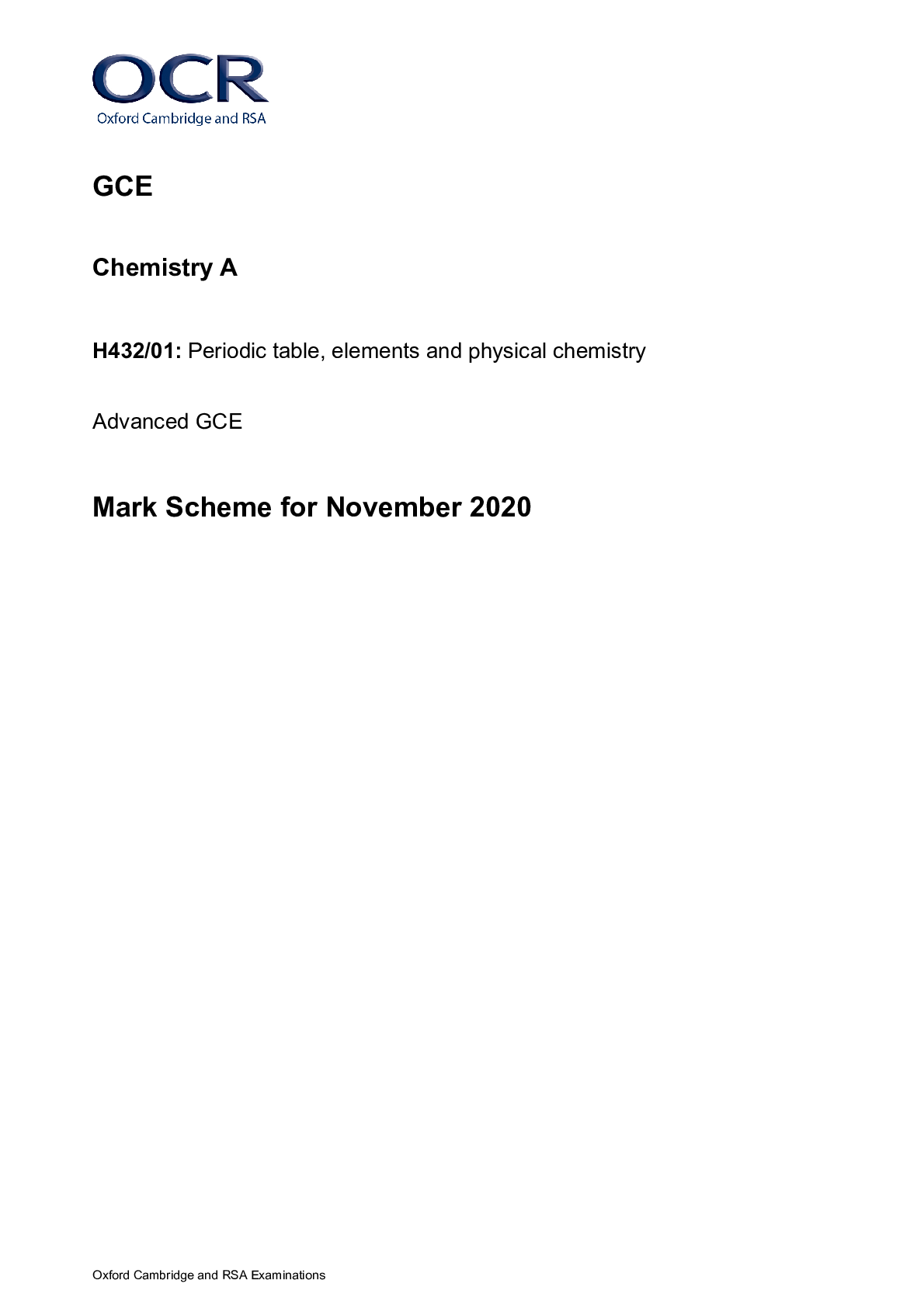History > AS Mark Scheme > GCE History A Y113/01: Britain 1930-1997 Advanced GCE Mark Scheme for November 2020 (All)
GCE History A Y113/01: Britain 1930-1997 Advanced GCE Mark Scheme for November 2020
Document Content and Description Below
Oxford Cambridge and RSA Examinations GCE History A Y113/01: Britain 1930-1997 Advanced GCE Mark Scheme for November 2020Oxford Cambridge and RSA Examinations OCR (Oxford Cambridge and RSA) is a... leading UK awarding body, providing a wide range of qualifications to meet the needs of candidates of all ages and abilities. OCR qualifications include AS/A Levels, Diplomas, GCSEs, Cambridge Nationals, Cambridge Technicals, Functional Skills, Key Skills, Entry Level qualifications, NVQs and vocational qualifications in areas such as IT, business, languages, teaching/training, administration and secretarial skills. It is also responsible for developing new specifications to meet national requirements and the needs of students and teachers. OCR is a not-for-profit organisation; any surplus made is invested back into the establishment to help towards the development of qualifications and support, which keep pace with the changing needs of today’s society. This mark scheme is published as an aid to teachers and students, to indicate the requirements of the examination. It shows the basis on which marks were awarded by examiners. It does not indicate the details of the discussions which took place at an examiners’ meeting before marking commenced. All examiners are instructed that alternative correct answers and unexpected approaches in candidates’ scripts must be given marks that fairly reflect the relevant knowledge and skills demonstrated. Mark schemes should be read in conjunction with the published question papers and the report on the examination. © OCR 2020Y113/01 Mark Scheme November 2020 2 Annotations Annotation Meaning of annotation Blank Page Highlight Off-page comment Assertion Analysis Evaluation Explanation Factor Illustrates/Describes Irrelevant, a significant amount of material that does not answer the question Judgement Knowledge and understanding Provenance Simple comment Unclear ViewY113/01 Mark Scheme November 2020 3 Section A Question Answer/Indicative content Mark Guidance 1 Using these four sources in their historical context, assess how far they support the view that Churchill was a skilled military adviser and strategist during the Second World War. • In discussing how Source A does not support the view, answers might refer to Wavell arguing that Churchill’s views had not changed since the Boer War of 1899. • In discussing the provenance of Source A, answers might consider that it is a letter written in 1950, but that Churchill disliked Wavell. • In discussing the historical context of Source A, answers might consider that Churchill had taken troops from him when Italy invaded Greece and that he also lacked the forces to meet the Germans in North Africa. • In discussing how Source B does support the view, answers might refer to Churchill showing an understanding of the long-term implications and likely outcome of his strategy. • In discussing the provenance of Source B, answers might consider that it was written by Churchill to justify his strategy. • In discussing the historical context of Source B, answers might consider the difficulty of the German attack on Russia and the establishment of air superiority later in the war. • In discussing how Source C does not support 30 • No set answer is expected. • At Level 5 and above, there will be judgement about the issue in the question. • To be valid judgements they must be supported by accurate and relevant material. • At Level 4 and below, answers may be simply a list of which sources support or challenge the view in the question. • Knowledge must not be credited in isolation; it should only be credited where it is used to analyse and evaluate the sources, in line with descriptions in the levels mark scheme.Y113/01 Mark Scheme November 2020 4 2* the view, answers might refer to Churchill changing his mind over strategy. • In discussing the provenance of Source C, answers might consider that it is from Lord Alanbrooke’s diary in 1943 and that, at that time, Alanbrooke was Chief of the Imperial General Staff. • In discussing the historical context of Source C, answers might refer to Churchill’s relationship with Alanbrooke, who was a careful planner and wanted to avoid heavy casualties. However, the decision to protect the Empire was not challenged and there was support to send equipment to North Africa • In discussing how Source D does support the view, answers might refer to Churchill offering advice when problems could not be solved. • In discussing the provenance of Source D, answers might refer to it being written by one of Churchill’s secretaries. • In discussing the historical context of Source D, answers might comment on Churchill’s unpredictability, lack of realism and earlier failings but also his ability to see a wider view than some of his generals. Assess the reasons why government relations with the unions were so poor in the period from 1964 to 1979. 20Y113/01 Mark Scheme November 2020 5 In arguing that government attempts to limit union power were the most important reason: • Answers might consider the impact of ‘In Place of Strife’. • Answers might consider the impact of Heath’s Industrial Relations Act of 1971 and the response of the unions to the Act. • Answers might consider that hostility to Heath’s Act led to an increase in strikes. • Answers might consider that he was effective in winning landed support by reducing land tax. • Answers might consider that his policies were effective as the national debt was reduced. • Answers might consider attempts by Callaghan to control inflation which depended on unions agreeing to pay rises of no more than 5%. In arguing that there were other reasons: • Answers might consider that the Unions thought the Labour party should govern in the interest of the workers. • Answers might consider the power and influence of the unions. • Answers might consider the decline of traditional industries which led to demands for help and protection. • Answers might consider the growth of militancy within the Union movement in the early 1970s. • Answers might consider the aim of the unions to bring down Heath’s government. • Answers might consider the role of the miners. • No set answer is expected.No set answer is expected. • At higher levels, candidates will focus on weighing up the extent to which reasons affected relations, but at Level 4 may simply list reasons. • At Level 5 there will be judgement as to the most important reason. • At higher Levels candidates might establish criteria against which to judge the most important reason. • To be valid judgements, claims must be supported by relevant and accurate material. If not, they are assertions. • Knowledge must not be credited in isolation, it should only be credited where it is used as the basis for analysis and evaluation, in line with descriptions in the levels mark scheme.Y113/01 Mark Scheme November 2020 6 3* • Answers might consider that workers demanded pay rises which added to inflationary pressures. • Answers might consider the failure of the Social Contract. • Answers might consider that governments would look weak if they gave in to union demands. • Answers might consider the scale of pay demands made during 1978-9. To what extent was there a social revolution under Thatcher? In arguing that there was a social revolution: • Answers might consider that the education pupils received, and the education structure, changed. • Answers might consider that standards within education and spending rose. • Answers might consider schools gained more autonomy. • Answers might consider Thatcher’s view about welfareism and a dependency culture, particularly in the NHS. • Answers might consider there were considerable changes to the NHS with cost cutting, opting out and attaining independent status. • Answers might consider GPs were given control over their budgets. • Answers might consider the attempts to introduce 20 No set answer is expected. • No set answer is expected. • At higher levels, candidates will focus on the ways different factors contributed to social revolution, but at Level 4 may simply list factors. • At Level 5 there will be judgement as to what extent there was, or was not, a ‘social revolution’. • At higher Levels candidates might establish criteria against which to judge whether there was a social revolution. • To be valid judgements, claims must be supported by relevant and accurate material. If not, they are assertions. • Knowledge must not be credited in isolation, it should only be credited where it is used as the basis for analysis and evaluation, in line with descriptions in the levels mark scheme.Y113/01 Mark Scheme November 2020 7 competition and market forces into the NHS. • Answers might consider that social security spending was more carefully targeted, child benefit reduced, benefits did not go up in line with inflation. • Answers might consider that universality was ended. • Answers might consider that the private and voluntary sectors were used more. • Answers might consider there was a social revolution as council houses were sold and longterm council tenants were given the right to buy their houses. • Answers might consider the encouragement to home ownership. • Answers might consider that freedom was extended. In arguing that there was not a social revolution: • Answers might consider that there was limited interest in the Cabinet in education. • Answers might consider that Local Authorities were strong opponents of the educational changes. • Answers might consider that university grants were not abolished. • Answers might consider that leaks to the press and fear of election defeat prevented major changes to the NHS. • Answers might consider that concerns about the electorate prevented radical change to social security policy.Y113/01 Mark Scheme November 2020 8 • Answers might consider that Thatcher failed to end the dependency culture. • Answers might consider that there was no reduction in central control, possibly even an increase.OCR (Oxford Cambridge and RSA Examinations) The Triangle Building Shaftesbury Road Cambridge [Show More]
Last updated: 1 year ago
Preview 1 out of 10 pages

Reviews( 0 )
Document information
Connected school, study & course
About the document
Uploaded On
Oct 10, 2022
Number of pages
10
Written in
Additional information
This document has been written for:
Uploaded
Oct 10, 2022
Downloads
0
Views
48

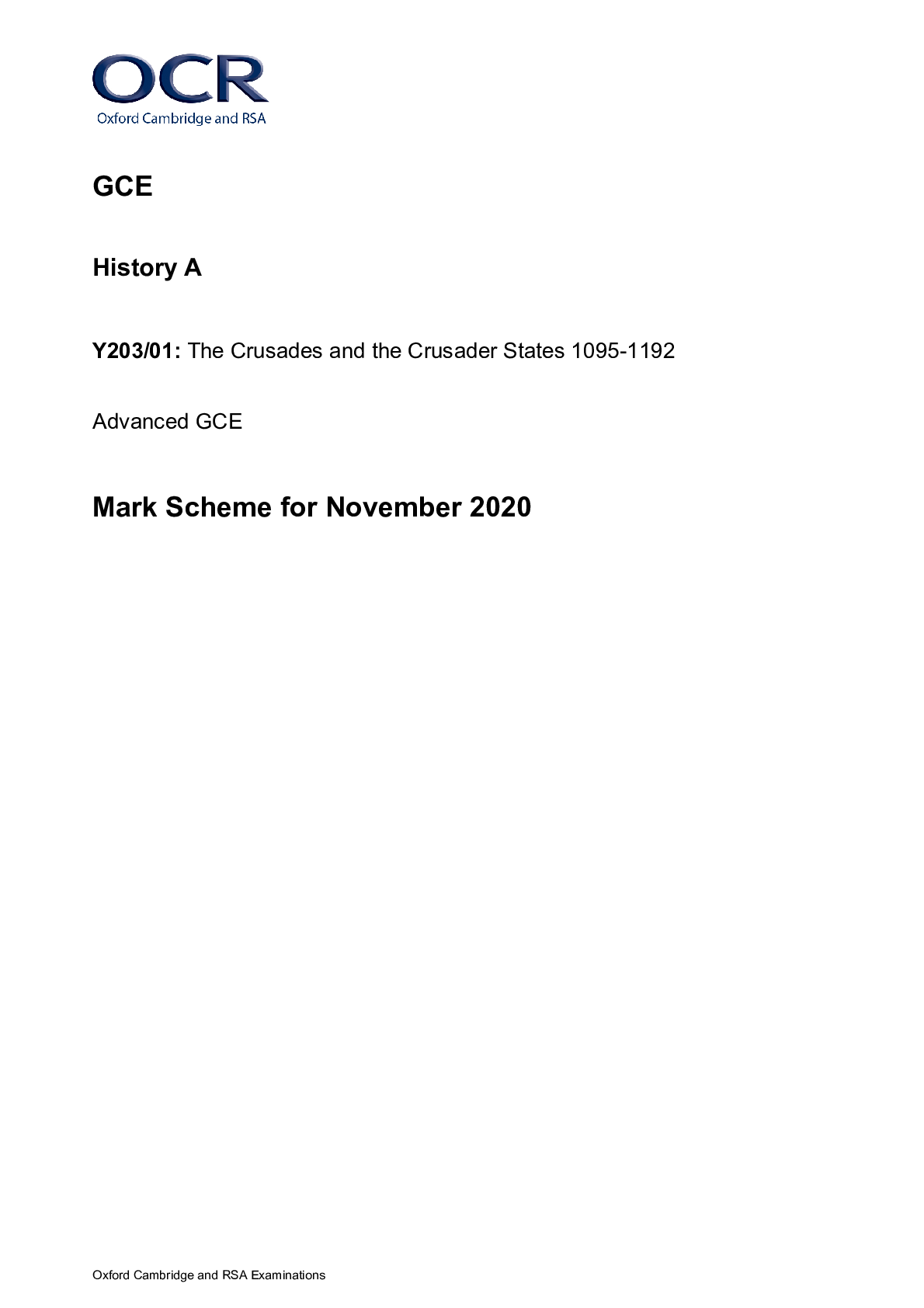
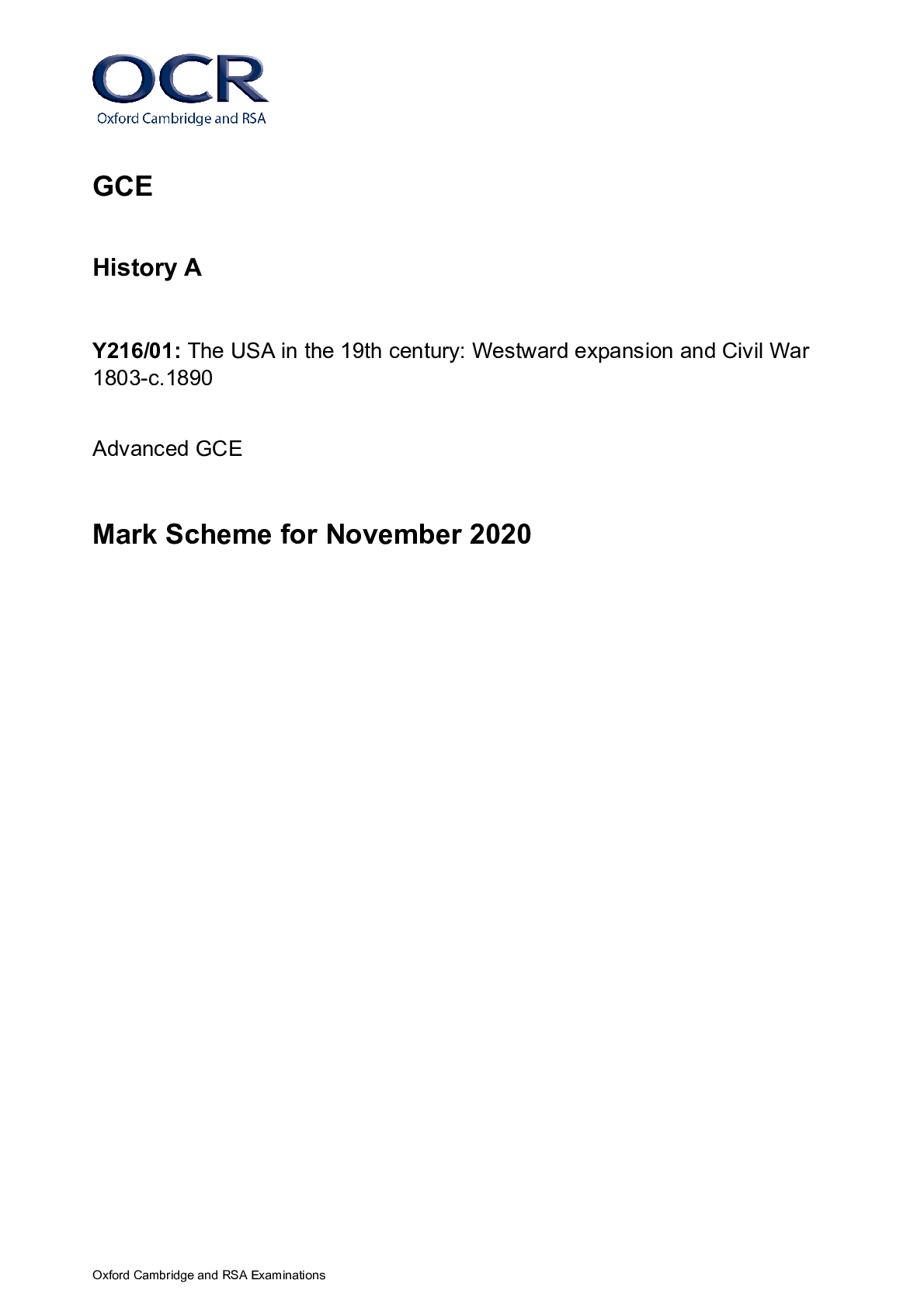
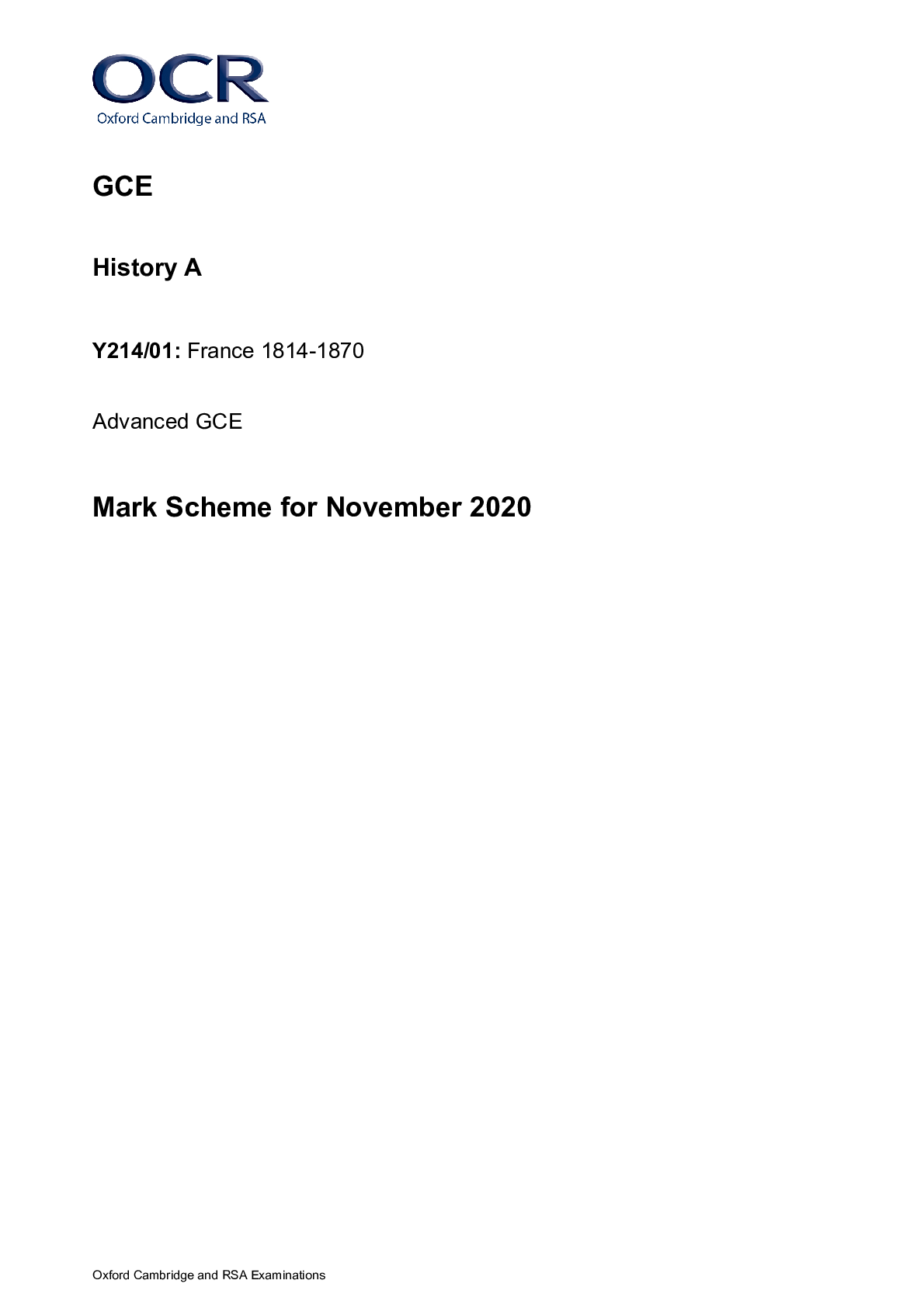


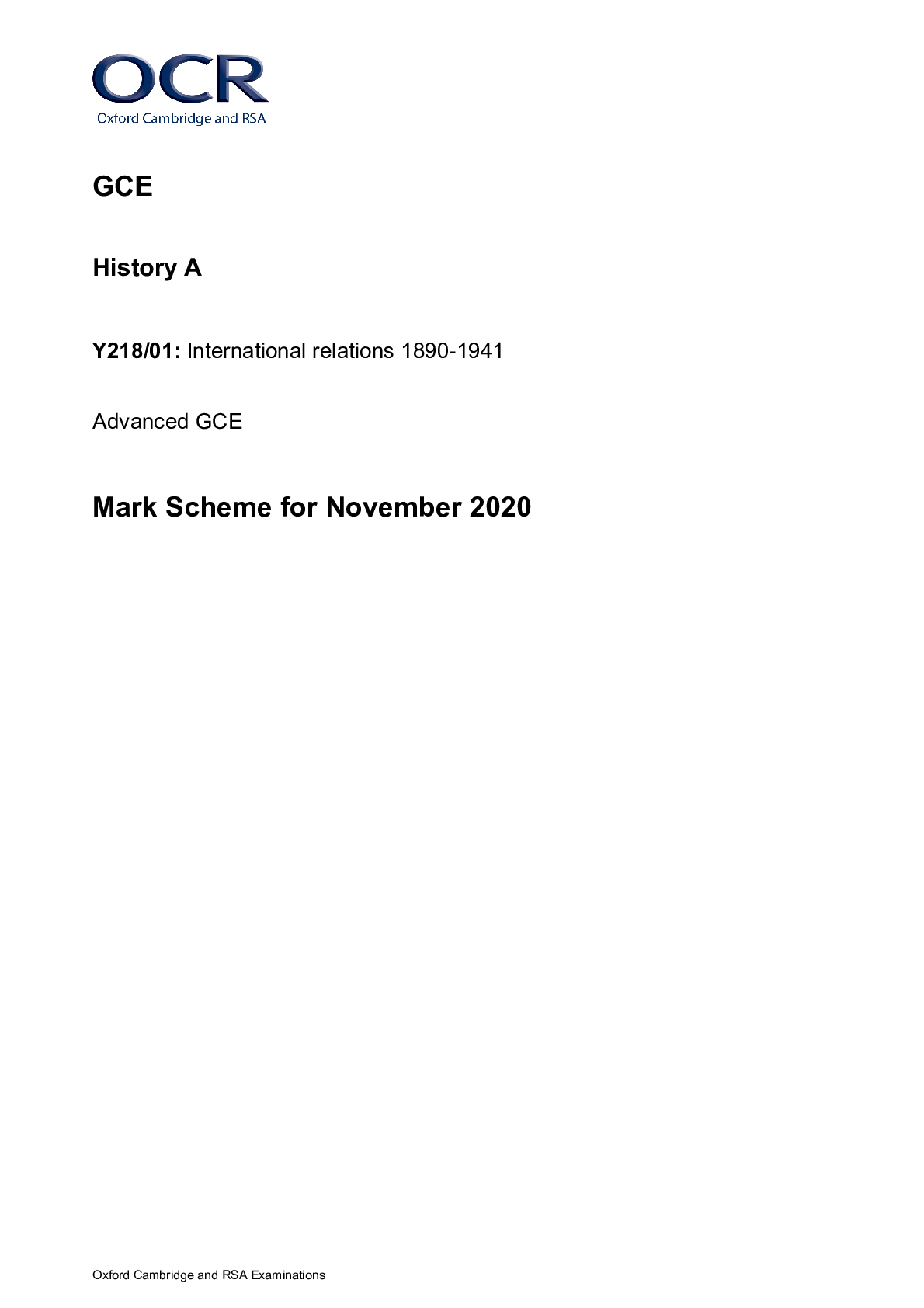
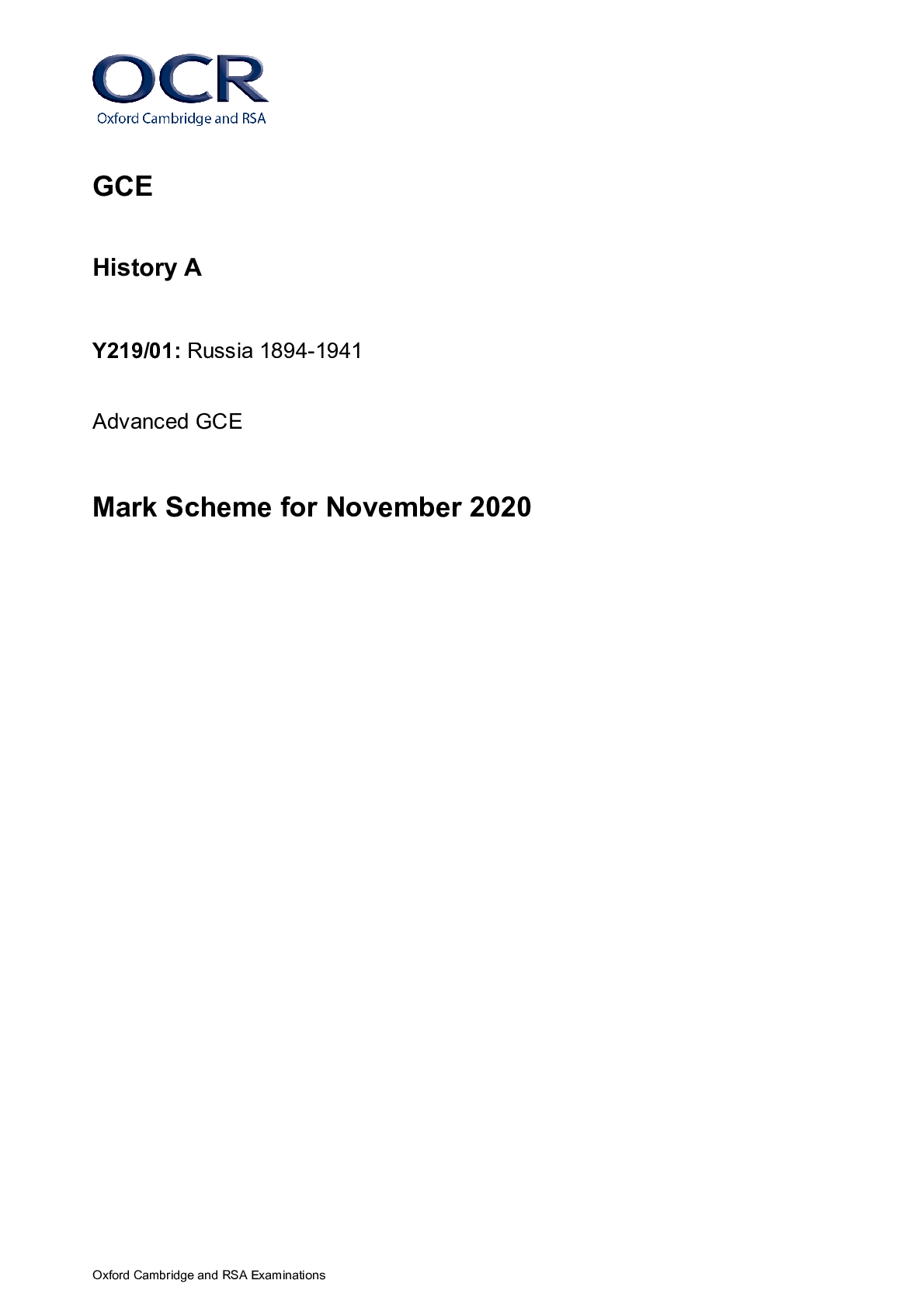







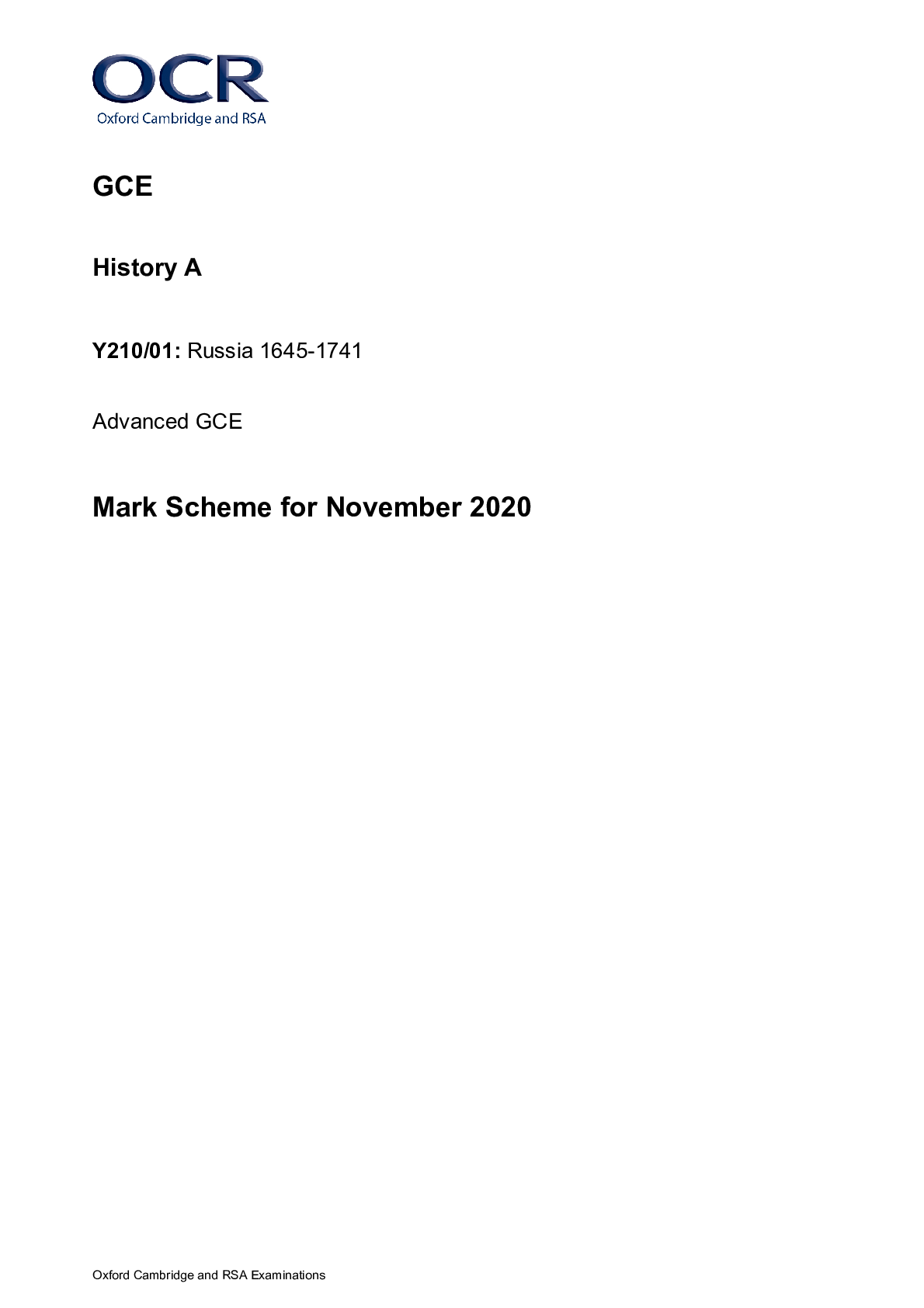


.png)

